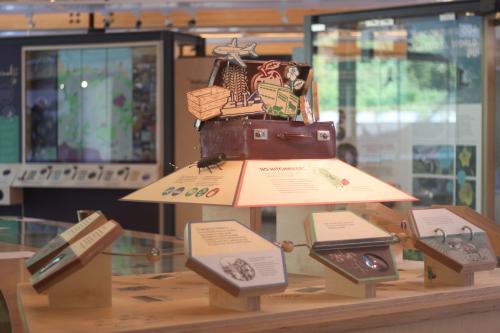New and emerging diseases of plants and animals are one of the greatest threats to food security and natural resources today. These emergences are accelerating, driven by the effects of climate change, trade and human movement of plant and animal material.
Edinburgh is the arrival port for Scotland, and the RBGE is often one of the first stops for tourists before the Highlands and beyond. Through a new interactive display housed in the John Hope Gateway Centre we are aiming to effect real change around biosecurity practice by engaging with visitors to explain how worldwide movements can transmit pests and diseases—and what they can do to stop the spread of any unwanted hitchhikers
First Point of Contact
RBGE’s four gardens are visited by more than 900,000 people yearly, and each visitor physically interacts with a disinfectant foot bath on entry. Whether they walk through or jump over, each has consciously or subconsciously had to make a decision about biosecurity.
We have recently redesigned the information signs around these biosecurity foot baths. The signs need to get their message across quickly and visually, and to apply to the variety of threats that face Scotland today. We settled on a new character, Hatch. A quick glance at Hatch (below) gets the message across: creatures like this can hitch a ride in mud and plants, on our shoes, and in our possessions.
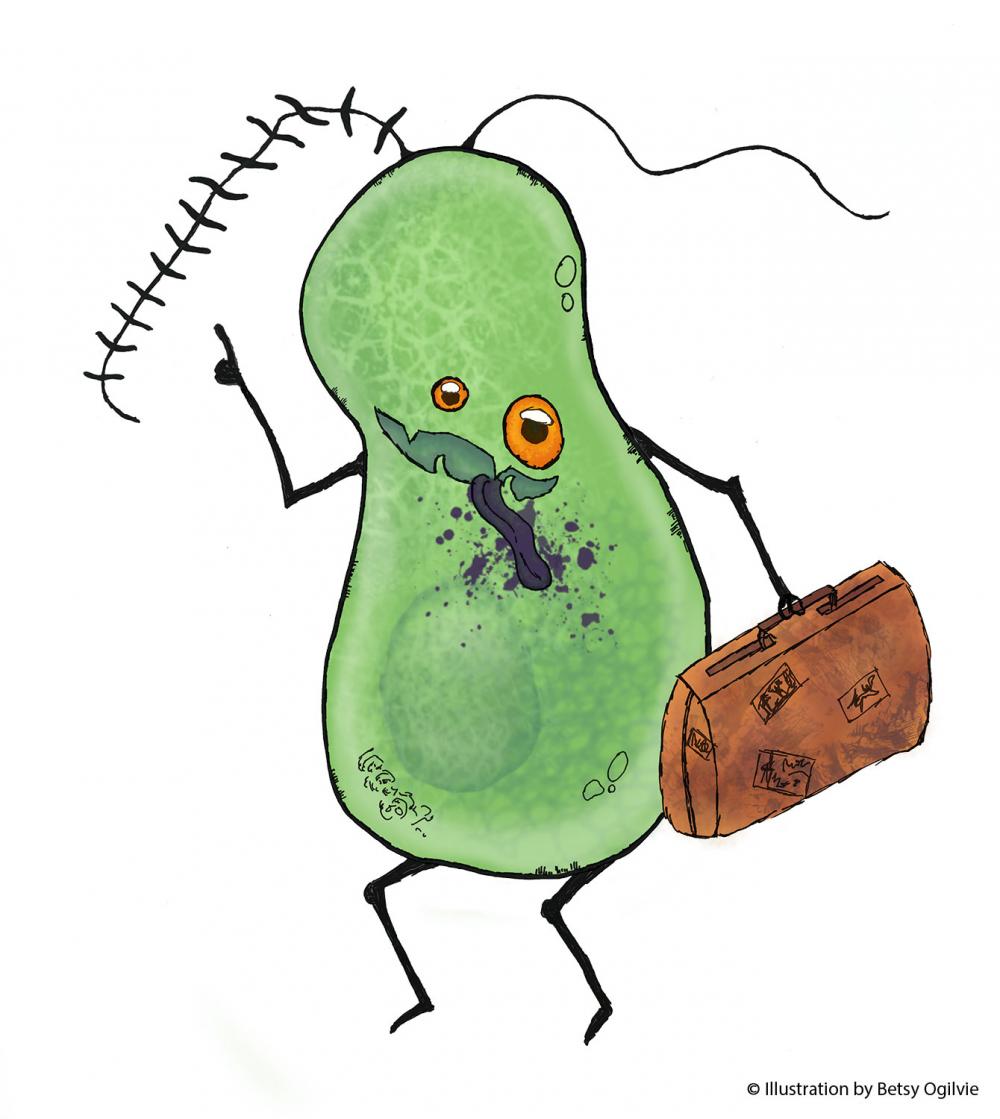
Movement is the Message
The exhibit highlights movement: pests and pathogens are most dangerous when they’re transported to new environments and encounter hosts that have not evolved defences. A series of interactive panels provide examples across four sectors—forestry, horticulture, crops, and livestock—while a track with sliding beads emphasises the connections among them.
Forestry
Forest dieback due to introduced pests and diseases can happen quickly and dramatically. The first panel shows aerial photos from the same forest in Glentrool, Dumfries and Galloway, taken only a year apart. During this time, the larch forest turned from green to brown, killed by the introduced water mould Phytophthora ramorum. The James Hutton Institute and RBGE are participants in the Phyto-Threats research project, investigating how these kinds of pathogens move from nurseries into forests and the natural environment. This project is still ongoing but preliminary findings show that water management in nurseries is a key step in reducing the spread of this pathogen.
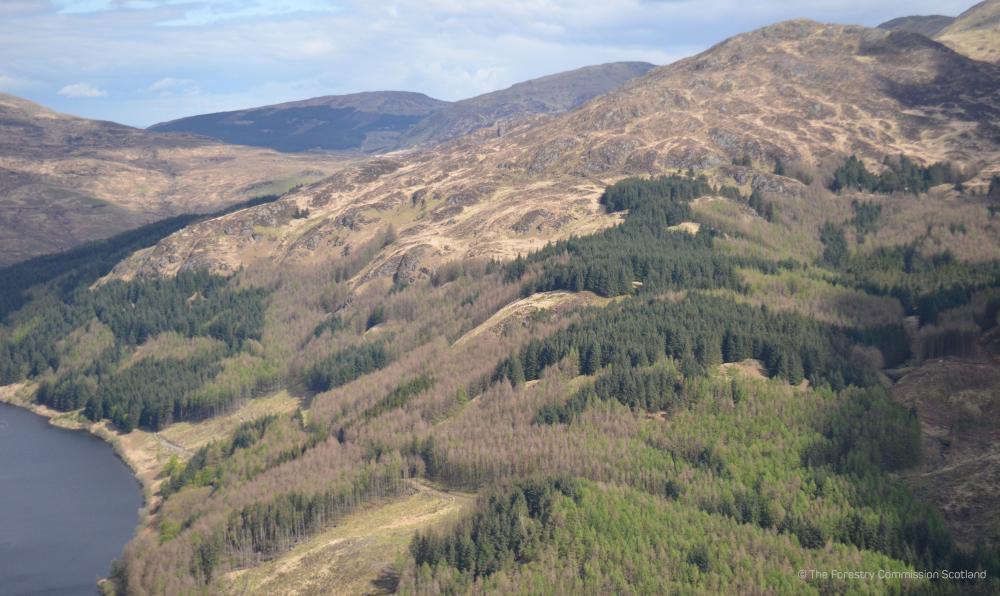
Horticulture
Botanic gardens are an important tool for plant conservation: they allow the propagation of plants away from conditions that threaten local communities, and are critical tools for research and scientific collaboration. Within the display, we highlight how RBGE are working to minimise risks associated with plant movement through quarantine and monitoring. Our work with the International Plant Sentinel Network uses plant collections as early warning systems for new threats to ornamental and native plants. Botanic gardens are also well-established hubs for inspiring and involving the public in science. For example, the RBGE joined forces with the public and recently discovered the arrival of the zigzag elm sawfly in Surrey, England. Due to their large numbers, these flies are a threat to other insects who also feed on elm foliage.
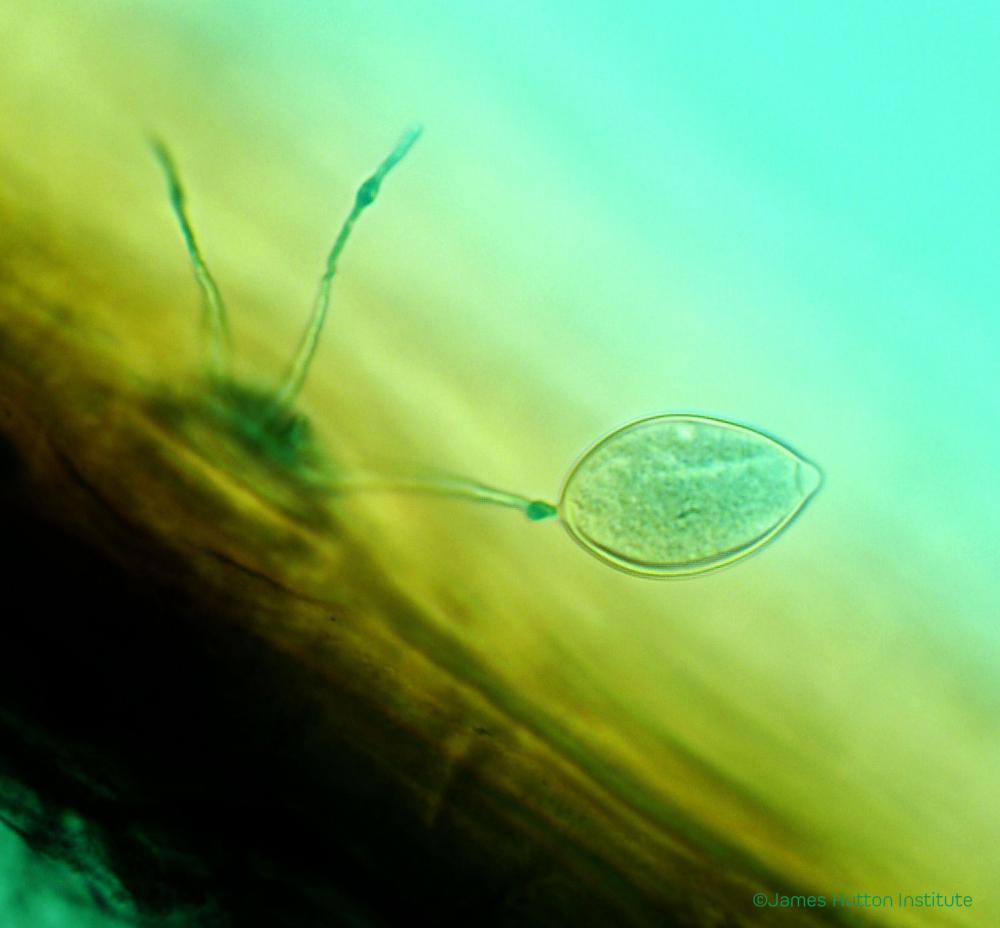
These pathogens can spread from ornamental plants in trade to gardens, forests, and natural areas.
Crops
Plant disease epidemics present a major threat to food security. A prime example is late blight of potato which sparked the Great Famine of the mid-1800s in Ireland, and the resulting mass migration. The disease threat to food security is still very much in the present. Old diseases evolve responses to chemical controls and disease resistant varieties, and new diseases continue to emerge. Late blight is still omnipresent where potatoes and tomatoes are grown. The Potato Cyst Nematode is now one of the most damaging potato threats in Europe, and is a quarantine pest worldwide. The display gives a summary of some of the research by SRUC and the The James Hutton Institute in detecting and managing this serious pest. There is plenty about potatoes elsewhere at RBGE: another exhibit has recently opened that explores how science is helping to protect our potatoes, while the Edible Gardening Project are looking to recreate Edinburgh’s own potato variety.
Livestock
Diseases of animals can move in unexpected ways, as well, and soil, shoes, and even bits of wool, meat, or hide can carry pests that can be devastating to animals and industry. Our exhibit highlights the sheep scab mite, Psoroptes ovis, which was eradicated in Britain but allowed to re-enter on imported sheep. Moredun Research Institute has a very useful directory that contains more information about infectious diseases of livestock and safeguarding safe and sustainable food supplies.
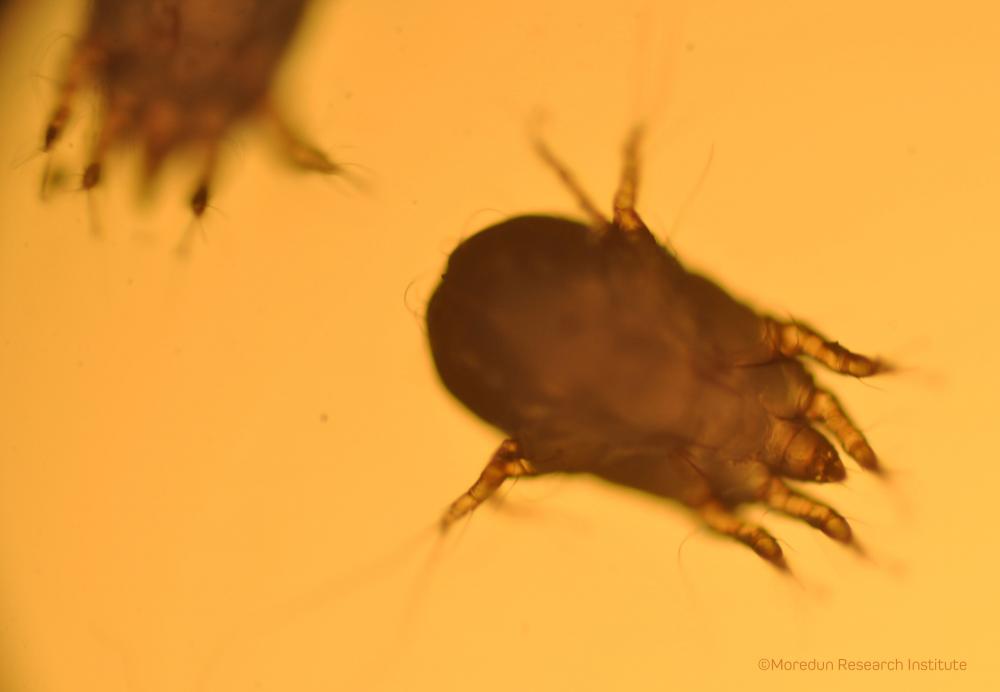
What you can do to help
Personal choices can make a big difference. Buying plants from trusted, local suppliers; cleaning shoes, tyres, and pets’ paws between visits to farms, forests, and natural areas; and not bringing plants or animal products home after traveling abroad can all help slow the spread of pests and pathogens. The Forestry Commission Scotland and Science & Advice for Scottish Agriculture offer some simple and practical advice on how you can help prevent creatures like Hatch from hitching a lift.
We would like to thank project leader Dr Katy Hayden, RBGE, who worked with scientists Dr Beth Wells, Moredun Research Institute; Dr Fiona Burnett, SRUC; Dr David Cooke, James Hutton Institute; and RBGE senior horticulturist William Hinchliffe to design content, collaborating with RGBE Exhibitions Officer Kenna Tasker and Science Communicator Max Coleman to turn ideas into reality, using local illustrators and fabricators. The Forestry Commission Scotland, Forest Research, and SASA collaborated and shared content.
